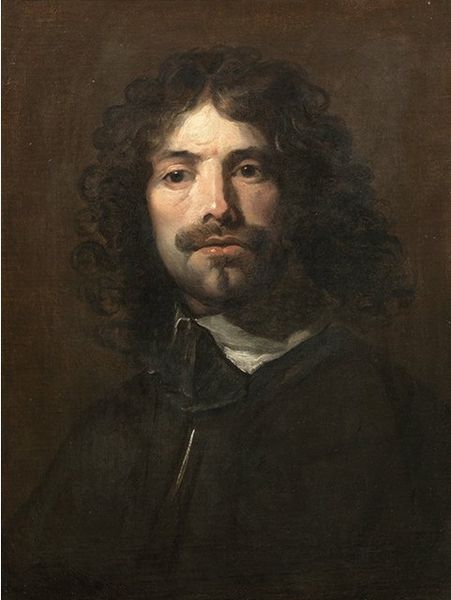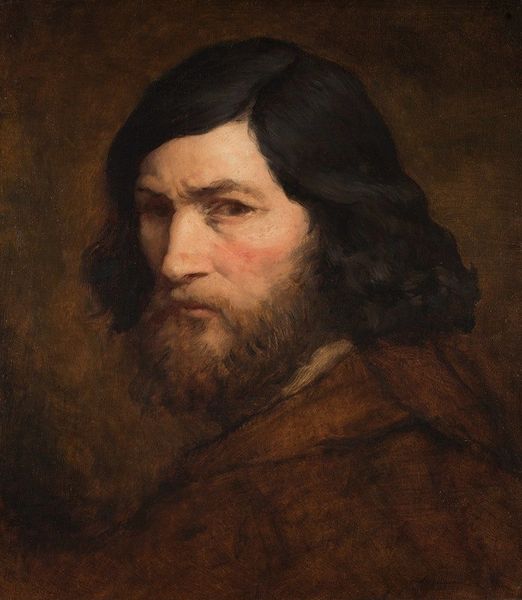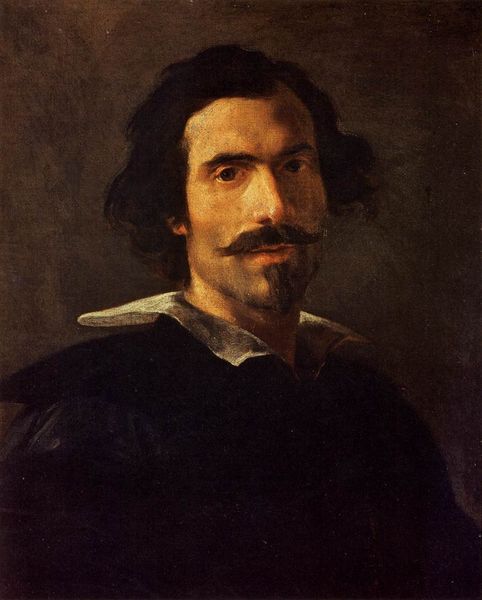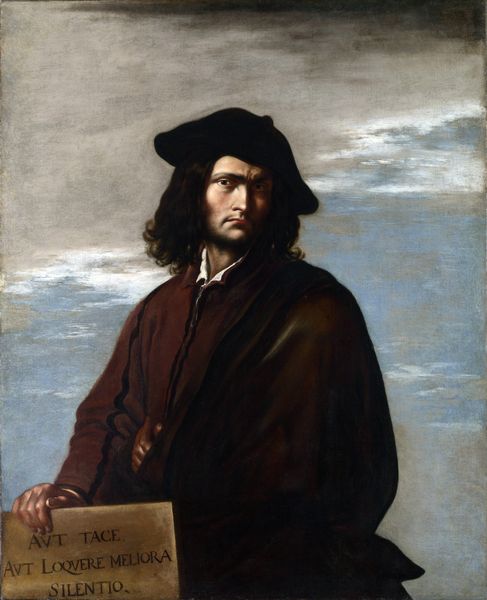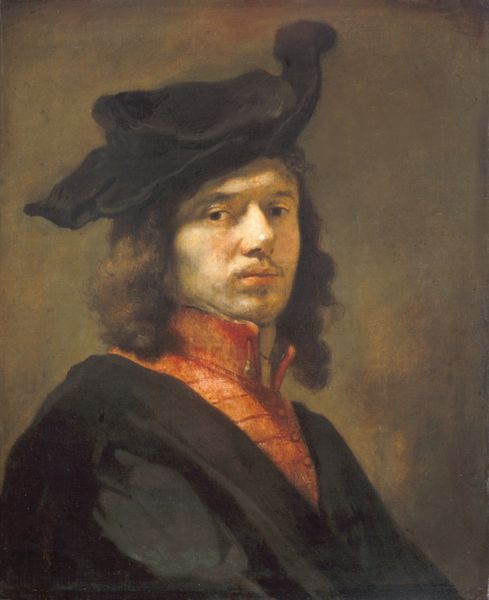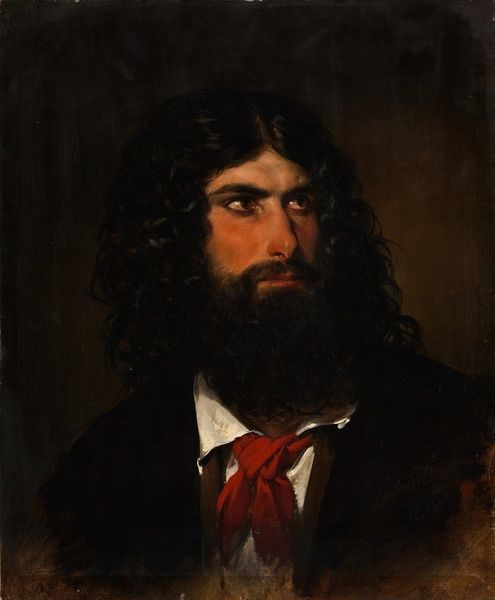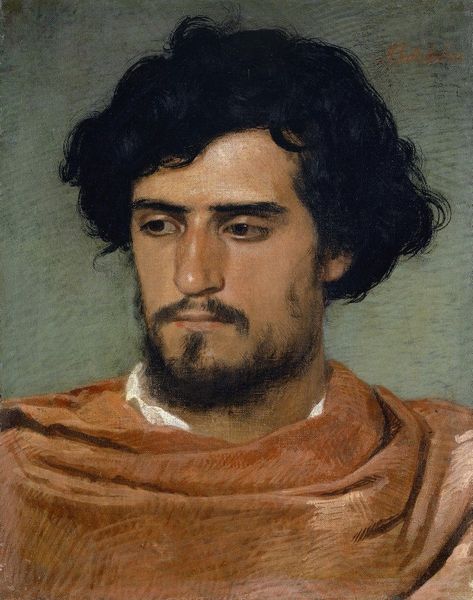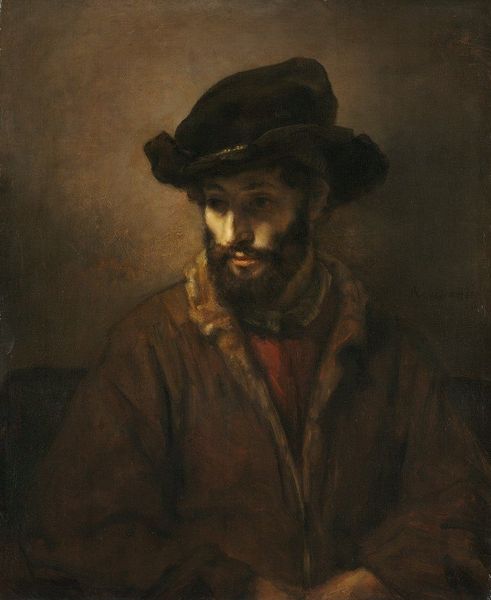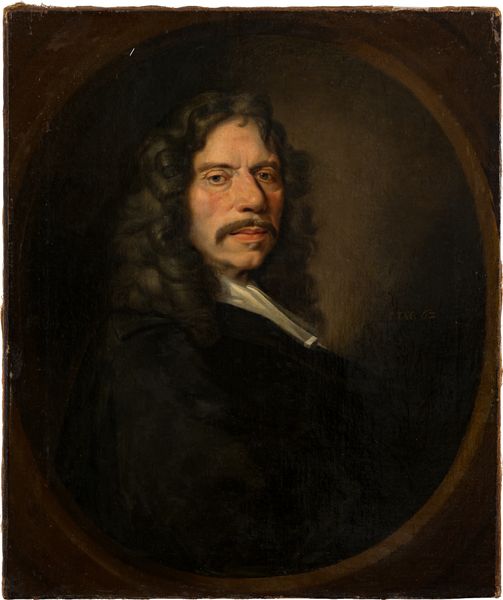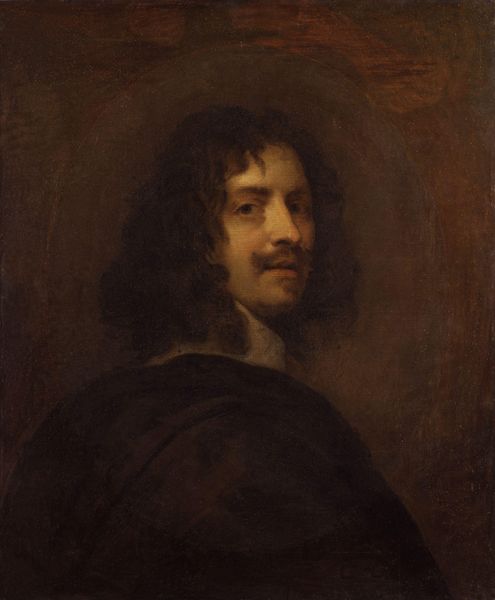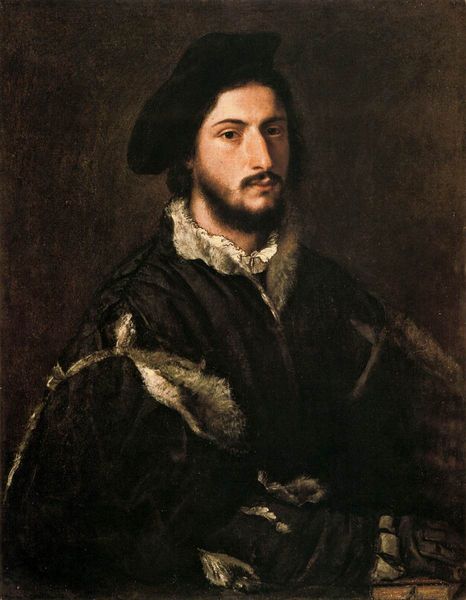
#
figurative
#
portrait image
#
portrait
#
male portrait
#
portrait reference
#
portrait head and shoulder
#
portrait drawing
#
facial portrait
#
portrait art
#
fine art portrait
#
digital portrait
Copyright: Public Domain: Artvee
Curator: Welcome. We’re standing before Salvator Rosa’s "Self-Portrait," dating from the 1650s. Editor: It’s striking. The gaze is intense, almost confrontational, against the darkened background. Curator: Yes, consider the chiaroscuro, the sharp contrast between light and shadow, a clear attempt to build drama and direct our focus. How does the asymmetry contribute? Editor: Well, look at the historical context. Rosa cultivated this image as the rebellious, individualistic artist. His dark clothing and disheveled hair defy the aristocratic polish you see in other self-portraits of the time. This challenges norms, it’s an act of defiance against the system that demands conformity. Curator: Indeed, and structurally, his gaze holds power. His slightly averted body positions him outside the expectations of formal portraiture, despite his direct gaze toward the viewer. This is enhanced by the dark color palette. It's a statement. Editor: That ‘statement’ isn't isolated. Rosa's social consciousness came through his landscapes too, depicting the plight of peasants rather than idealized pastoral scenes. He critiques power structures by depicting people from marginalized communities. Curator: The brushwork also emphasizes a looseness, particularly in the rendering of his hair. You can see the evidence of the artist's hand; the brushstrokes emphasize the medium. Editor: It gives us insight into Rosa as a political subject who rejects hierarchy through art that embodies the ethos of artistic autonomy and democratic representation. It seems this painting rejects courtly life as dishonest or stifling, while signaling a truer mode of existence that he’s bravely embodying. Curator: So we have on the one hand, a virtuoso performance in the materiality of paint, a very modern statement of artistic agency. Editor: Absolutely. We’re not simply admiring a likeness; we’re witnessing a calculated act of self-creation and the promotion of the artist's independent vision against established interests. Curator: I leave considering his self-fashioning with a renewed interest in Baroque art’s capacity for self-promotion, while Editor: While for me, I see that visual language being used to promote critical views and a spirit of radical independence, particularly relevant in our current political climate.
Comments
No comments
Be the first to comment and join the conversation on the ultimate creative platform.
